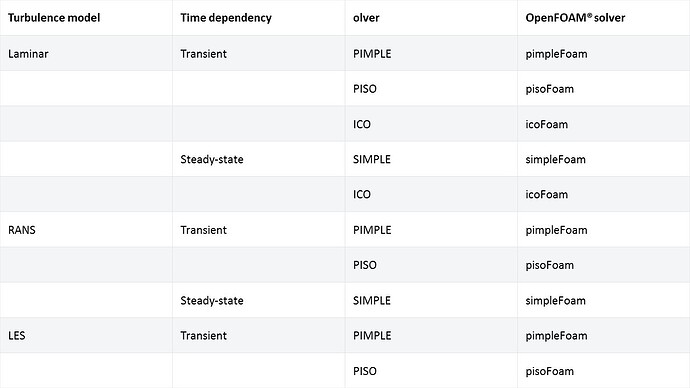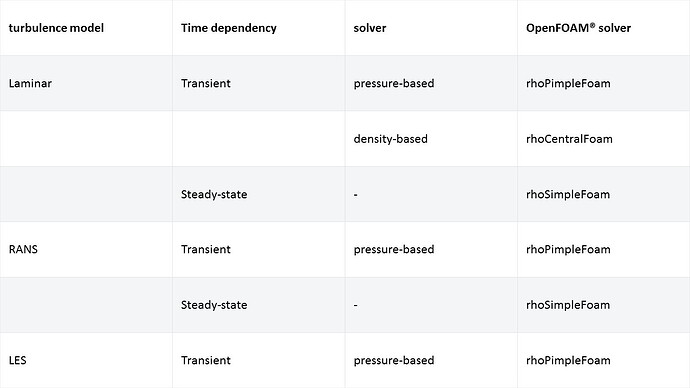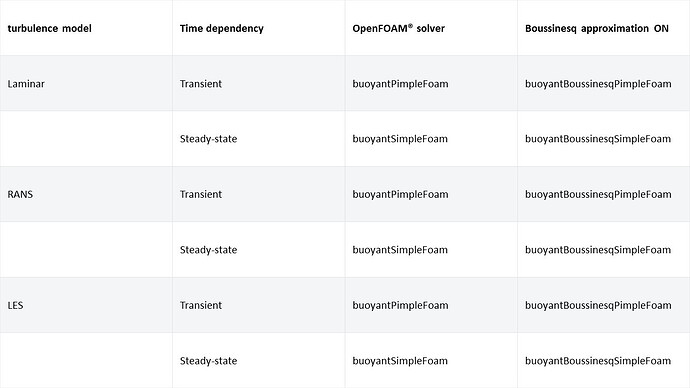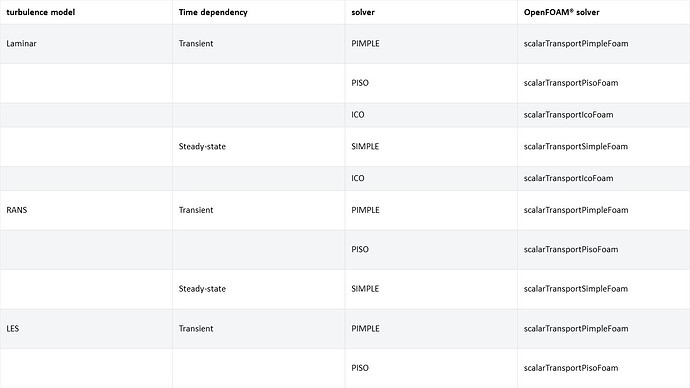
In this thread we provide you with the best resources you need in order to understand the functionalities of SimScale, set up your own simulations and learn about the theoretical fundamentals of the interesting field of Computational Fluid Dynamics (CFD). What are you waiting for? Let’s get started!
CFD | Computational Fluid Dynamics on our SimWiki
\underline{\textbf{Workshops related to CFD:}}
1. Got a weakness for medicine? The Biomedical Engineering workshop might be the workshop of your choice!
\rightarrow Biomedical Engineering Workshop
2. Interested in gathering some first experiences as an aerospace engineer?
\rightarrow Aerospace Workshop
3. Are you inquisitive? The Makers workshop should be your ideal playground!
\rightarrow Makers Workshop (CFD application focused on convective heat transfer)
\rightarrow Equivalent German Workshop: Simulieren wie die Profis
4. Enthusiastic about drones? Drone Workshop
5. Have you ever asked yourself what the difference between a pretty visualization and a meaningful simulation result is? Become a CFD master!
\rightarrow CFD Master Class
6. Delve into the interesting application of CFD in “Air conditioning and Ventilation”!
\rightarrow Air Conditioning and Ventilation Workshop
7. Admit it, you are a Formula1 enthusiast! Busted! Come and learn about the wonderful world of Formula 1 in this awesome workshop!
\rightarrow F1 Workshop
\underline{\textbf{Tutorials}}
Tutorials for FEA/CFD & Thermal Analysis: Tutorials
Step-by-Step Tutorials: Learn Simulation Step-By-Step
\underline{\textbf{Textbooks}}
\underline{\textbf{Videos}}
-
Introduction to Computational Fluid Dynamics – by Dr. K. M. Singh
-
Introduction to Computational Fluid Dynamics and Principles of Conservation - by Dr. Suman Chakraborty
-
CFD Simulation Setup in SimScale - by SimScale
\underline{\textbf{Blog}}
\underline{\textbf{Turbulence Modelling}}
Turbulence resources:
Turbulence Modelling Examples
\underline{\textbf{Incompressible fluid flow on SimScale}}
Incompressible Fluid Flow Analysis is used where fluid density variations are negligible meaning that there are no big velocity and temperature gradients.
Turbulence models available in this module:
-
Reynolds-averaged Navier–Stokes (RANS)
-
k-Epsilon
-
k-Omega
-
kOmega-SST
-
Large eddy simulation (LES)
-
Smagorinsky
-
Spalart-Allmaras
Incompressible Flow Analysis module solver on SimScale
Incompressible Fluid Flow Analysis Examples
\underline{\textbf{Compressible fluid flow on SimScale}}
Compressible Fluid Flow Analysis is commonly used where density variations have a significant influence on the investigated system. Usually, when the flow velocities exceed ~30 % of the speed of sound, compressible effects start to gain importance.
Turbulence models available in this module:
-
Reynolds-averaged Navier–Stokes (RANS)
-
k-Epsilon
-
kOmega-SST
-
Large eddy simulation (LES)
-
Smagorinsky
-
Spalart-Allmaras
Compressible Flow Analysis module solver on SimScale
[details=Click to show available solvers]
Compressible Fluid Flow Analysis Examples
\underline{\textbf{Convective Heat Transfer on SimScale}}
Convective Heat Transfer Analysis could be used to run simulations in which temperature changes in the fluid lead to density changes. Such changes in density cause the fluid to circulate under the influence of gravity.
Turbulence models available in this module:
-
Reynolds-averaged Navier–Stokes (RANS)
-
k-Epsilon
-
kOmega-SST
-
Large eddy simulation (LES)
-
Smagorinsky
-
Spalart-Allmaras
Convective Heat Transfer Analysis module solver on SimScale
Convective Heat Transfer Analysis Examples
\underline{\textbf{Conjugate Heat Transfer (CHT) on SimScale}}
Conjugate Heat Transfer Analysis allows the simulation of the heat transfer between Solid and Fluid domains by exchanging thermal energy at the interfaces between them. It requires a multiregion mesh to have a clear definition of the interfaces in the computational domain. Such a mesh can be created with the Hex-dominant parametric operation in the mesh creator.
Turbulence models available in this module:
-
Reynolds-averaged Navier–Stokes (RANS)
-
k-Epsilon
-
kOmega-SST
-
Large eddy simulation (LES)
-
Smagorinsky
Conjugate Heat Transfer (CHT) Analysis Examples
\underline{\textbf{Passive Scalar Transport on SimScale}}
Passive Scalar Transport Analysis type allows you to simulate the transport of a scalar quantity within an incompressible fluid flow. The core assumption of this analysis is that the species that is transported within the flow does not affect the fluid flow (therefore passive).
Turbulence models available in this module:
-
Reynolds-averaged Navier–Stokes (RANS)
-
k-Epsilon
-
k-Omega
-
kOmega-SST
-
Large eddy simulation (LES)
-
Smagorinsky
-
Spalart-Allmaras
Passive Scalar Transport Analysis module solver on SimScale
Passive Scalar Transport Analysis Examples
\underline{\textbf{Multiphase Fluid Flow on SimScale}}
Multiphase Fluid Flow Analysis could be used to simulate the behavior of a mixture of fluids and their interactions. The analysis is carried out using the VoF (Volume of fluid) method which is a standard approach for the computation of multiphase systems.
Turbulence models available in this module:
-
Reynolds-averaged Navier–Stokes (RANS)
-
k-Epsilon
-
k-Omega
-
kOmega-SST
-
Large eddy simulation (LES)
-
Smagorinsky
-
Spalart-Allmaras
Multiphase Fluid Flow Analysis Examples
\underline{\textbf{Discrete Phase Model on SimScale}}
Discrete Phase Model Analysis could be used to run simulations that consist of a continuum and a discrete phase. The discrete phase is represented with particles which interact with the continuum phase. Full particle-fluid interactions could be considered. Therefore, the model is suitable for dense and dilute particle flows.
Turbulence models available in this module:
-
Reynolds-averaged Navier–Stokes (RANS)
-
k-Epsilon
-
Large eddy simulation (LES)
-
Smagorinsky
-
k-Eqn
Discrete Phase Model Analysis Examples
\underline{\textbf{Potential Flow on SimScale}}
Potential Flow Analysis could be used to run simulations in which the velocity field is irrotational. This assumption is valid in several applications.
Potential Flow Analysis module solver on SimScale
For all cases, OpenFOAM® solver potentialFoam is used.
Potential Flow Analysis Examples
\underline{\textbf{Advanced Topics in CFD}}
\underline{\textbf{Validation Cases using SimScale}}
In these validation cases, the simulation results on SimScale are compared to the numerical results presented in other studies to validate the accuracy of our solvers
Validation cases: Fluid Dynamics Validation Cases
Click to see all validation cases
- Hagen-Poiseuille Flow
- Turbulent Pipe Flow
- Compressible Flow: de Laval Nozzle
- Rotating Zones: Taylor-Couette Flow
- Multiphase Flow: Rising Bubble
- Aerodynamics: Flow around the Ahmed Body
- Buoyant Flow: Natural Convection between Differentially-heated Plates
- LES Flow Analysis Around Cylinder
- Scalar Transport in T-Junction Pipe
- DPM Analysis of a Gas-Solid Fluidised Bed
- Flow Reattachment: Flow over a Backward-facing Step
- Flow Analysis of a Butterfly valve
- Non-Newtonain flow through an expansion channel
- Free Heave Motion of a Floating Cylinder




